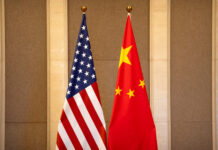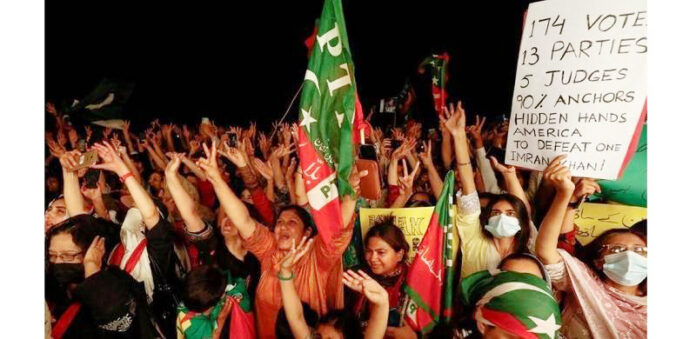Whether the PTI’s loss of its ‘bat’ symbol provoked a strong or a weak response is unknown, because the Election Commission of Pakistan’s action is so unprecedented. Such an evaluation can only be comparative, and as no previous instance comes to mind of a major party being denied the allocation of a symbol.
The so-called withdrawal of symbol was not so much a punishment for not having held proper elections, as the natural consequence of not having conducted elections in accordance with the Party’s constitution, and of failing to provide the ECP the requisite certifications which would allow it to honour those elections. The ECP cannot be said to have been over-active, for it acted on petitions, not off its own bat.
It could have ignored the petitions until after the elections, but that would have been to favour the PTI unduly. That it did not do. It might be argued the ECP does not apply the same close scrutiny to documents filed by other parties, but that should not obscure how the documents filed by the PTI were amateurish at best, and the failure to meet legal standards could not be covered by that of others.
That the PTI has been deprived of its symbol has caused its candidates many problems, the foremost being the need to educate their voters enough into voting for them axs independents. The tests for the PTI will begin after the election, the first being how to keep its members in line
The failure to hold intraparty elections meant that officebearers to issue ‘tickets’ (actually letters to Returning Officers asking them to allocate the symbol to someone) did not exist. The symbol was thus no longer available to the PTI to allocate.
However, the decision, followed by the Peshawar High Court’s striking it down, and then the Supreme Court’s upholding it, cannot obscure the fact that the February 8 election is taking place without the PTI symbol being used anywhere, even though the PTI has still put up its candidates, though as independents.
It does raise the question of who, if anybody, has been deprived, a claim by the PTI: that millions of PTI supporters have been. This may well be an exaggerated claim, and it will be tested on February 8. Of course, the first test will be to get the voters to accept the mandate to vote for independents. Then the candidates will need to convince voters that their symbol should be voted for; something that needs doing, but which is not that difficult.
The real danger was of more than one independent claiming to be the ‘asli nasli’ PTI candidate. However, that does not seem to be happening on a noticeable scale, perhaps because the PTI endorsement is a cross to be borne rather than something to boast of.
But if the PTI ticket is such a burden, why take it? Some have taken it because the only other option is to get out of politics, others because it provides a winning margin against an old rival. All have taken it because it represents votes. It may no longer be a registered party, but its voters must go somewhere.
So who are they?
First, they are Imran Khan fans. He has successfully tapped into the fan following he developed by two things. First was captaining Pakistan to victory in the 1992 World Cup. Then he raised money for a cancer hospital. Getting into politics was thus almost inevitable. Even before, he had developed name recognition which meant that he would become PM without ever having held ministerial office before, something only Benazir Bhutto had managed before in Pakistan. So what was so attractive about Imran? First of all, his message resonated. It was against elite capture, which meant that the two parties which had played at ‘ins’ and ‘outs’ from the time of the Zia Martial Law onwards, now needed to be replaced by clean leadership, because of corruption. That is why it was thought necessary, once he was removed from office, to tar him with the brush of corruption. It may have tarnished him, but it did not absolve his predecessors.
Another problem is that he depended on electables, because like other parties, he needed candidates who could afford to fight an election. That meant that he had in his ranks the descendants of the Unionists, the friends of the British, who had won the 1937 election, then joined the Muslim League before 1946, the Republicans in the 1950s, then the Convention League during the Ayub era, then the PPP before and after 1971, then the Junejo League in 1985, and who switched with dizzying speed between 1988 and 2018.
It should be noted that the PML(N) and the PPP were still in the field. These parties had been created by men who had risen during Martial Law regimes. PPP founder Zulfikar Ali Bhutto had emerged during the Ayub era, Mian Nawaz Sharif during the Zia era. The PTI is different to the extent that Imran Khan had never held any office during the Musharraf Martial Law.
An interesting phenomenon has been the shift of PPP votes to the PTI, making it worthwhile seeking a comparison between the two party’s messages. It is interesting that the PPP promoted socialism at a time when the whole world was moving left, towards state enterprises and managed economies, and the rise of the PML(N) and its industrialist founder came during an era of supply-side economics and privatization. The era continued during the PPP periods in power, and it too followed free-enterprise policies.
The shift in 2018 is why it seems that the PPP is campaigning to get that voter to return, now that the PTI is not available as an option. If it can court even part of the PTI vote, it could do well in some constituencies.
This would explain why the PPP is also targeting the PML(N) leaders, almost as it it was trying to outdo the PTI. This might be an acknowledgement that many PPP voters went to the PTI because they wanted to win for once: they were tired of losing to the PML(N) all the time.
One of the major differences between the PPP and the PTI was religion. The PPP was not an irreligous party, and claimed Islamic credentials. However, the PTI laid more emphasis on religion, with Imran Khan having said that he wished to build the ‘riyasat-i-Madina’. He explained that he meant a welfare state like those in Europe, but this proved a point of attack from both left and right.
The stance he had taken was not logically consistent within the Islamic tradition, but it resonated with the masses, who wished to retain their Islamic identity, but did not want to obey the dictates of the Sharia, especially as propounded by the orthodox ulema. This was the result of a resentment of the monopolisation of the Sharia by the ulema, as well as a recognition that orthodoxy had not stopped colonization. The mixing in of religious tropes, such as carrying a rosary and having a wife who observed hijab, reflected the aspirations of the PTI supporter, who wanted to retain his or her Muslim identity without giving up the full fruits of modernity. The playboy image helped rather than hindered, for supporters freely conceded that Imran had been a bit of a lad in the past, though he was now reformed. That reflected a desirable trajectory, of a colourful past as something that could successfully be put behind one, rather than something that need be a cause of condemnation.
That the PTI has been deprived of its symbol has caused its candidates many problems, the foremost being the need to educate their voters enough into voting for them axs independents. The tests for the PTI will begin after the election, the first being how to keep its members in line.























